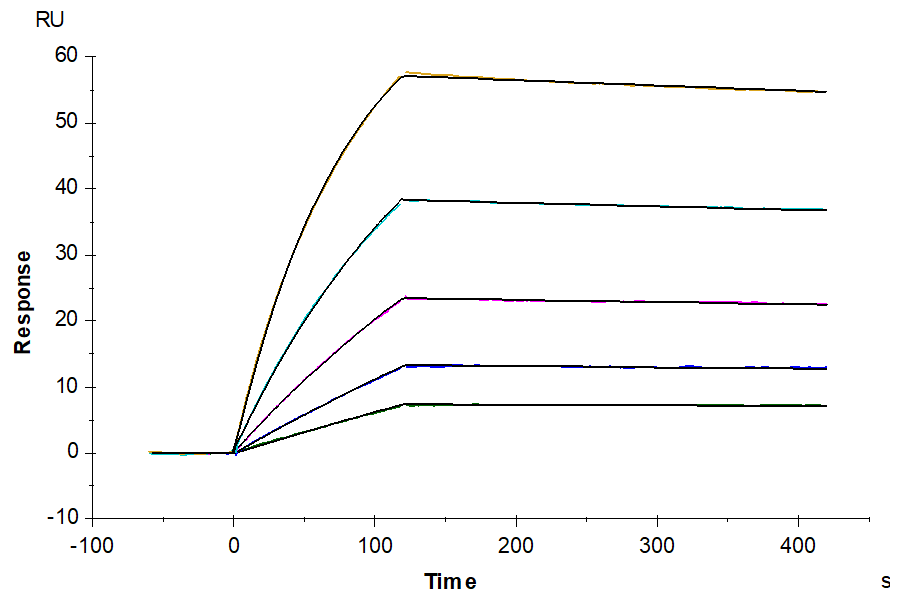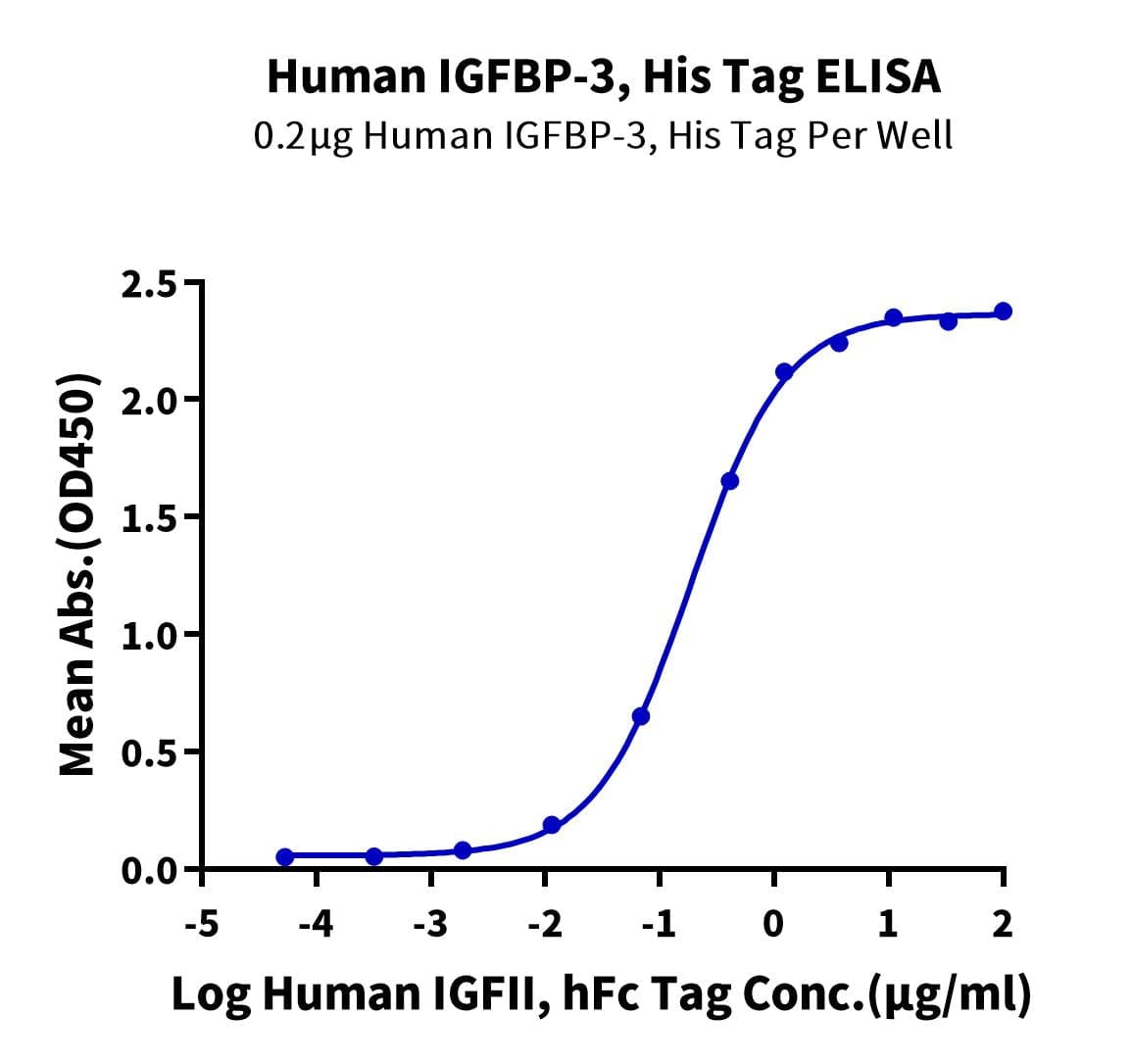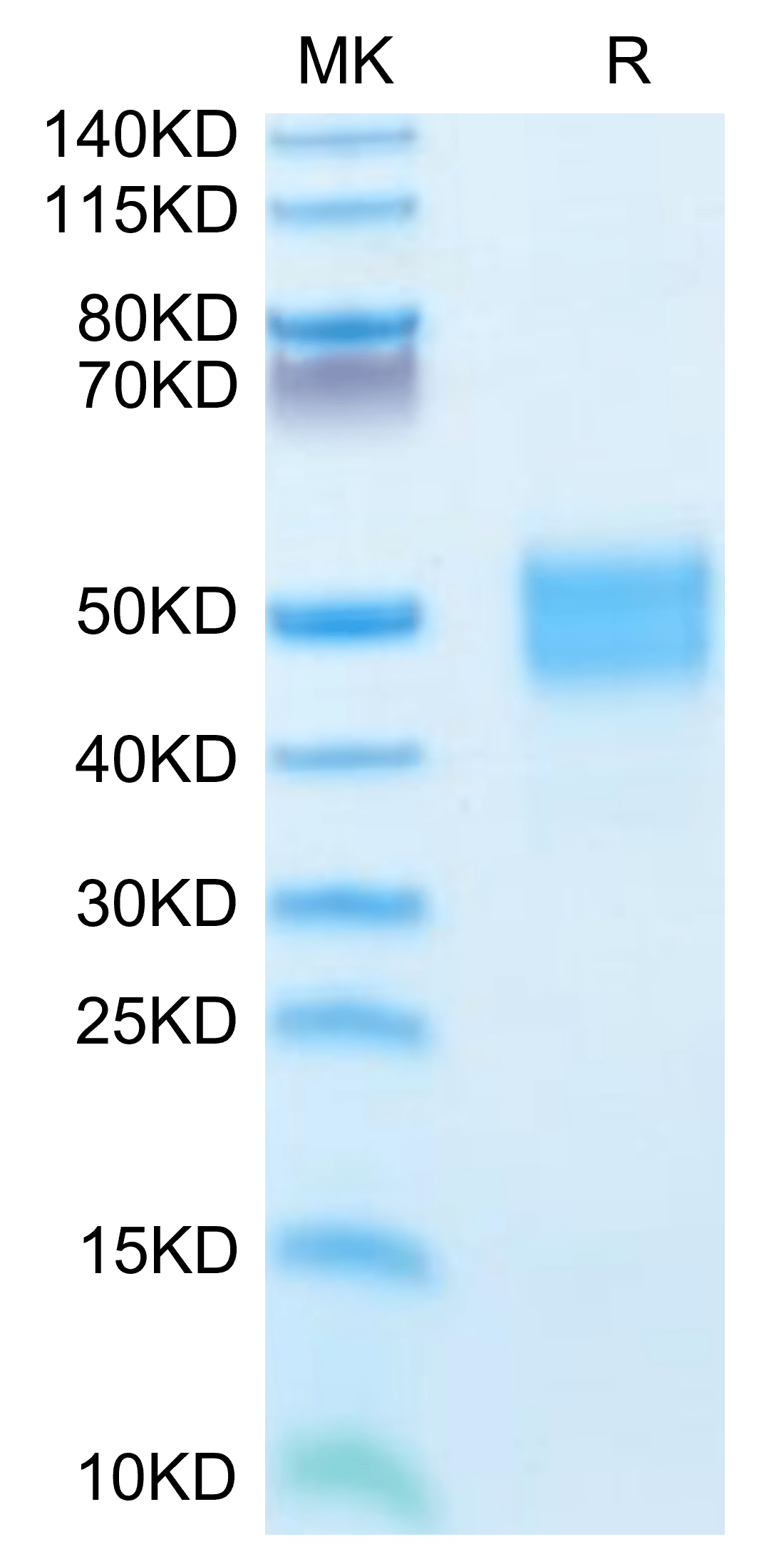| Weight | 1 lbs |
|---|---|
| Dimensions | 9 × 5 × 2 in |
| accession | AAH18962 |
| express system | HEK293 |
| product tag | C-His |
| purity | > 95% as determined by Tris-Bis PAGE |
| background | Insulin-like growth factor binding protein-3 (IGFBP-3) is a p53 tumor suppressor-regulated protein and a major carrier for IGFs in circulation. Among six high-affinity IGFBPs, which are IGFBP-1 through 6, IGFBP-3 is the most extensively investigated IGFBP species with respect to its IGF/IGF-I receptor (IGF-IR)-independent biological actions beyond its endocrine/paracrine/autocrine role in modulating IGF action in cancer. |
| molecular weight | The protein has a predicted MW of 29.8 kDa. Due to glycosylation, the protein migrates to 45-60 kDa based on Tris-Bis PAGE result. |
| available size | 100 µg, 500 µg |
| endotoxin | Less than 1EU per μg by the LAL method. |
Human IGFBP-3 Protein 3893
$203.00 – $675.00
Summary
- Expression: HEK293
- Functional: Yes (ELISA)
- Amino Acid Range: Gly28-Lys291
Human IGFBP-3 Protein 3893
| protein |
|---|
| Size and concentration 100, 500µg and lyophilized |
| Form Lyophilized |
| Storage Instructions Valid for 12 months from date of receipt when stored at -80°C. Recommend to aliquot the protein into smaller quantities for optimal storage. Please minimize freeze-thaw cycles. |
| Storage buffer Shipped at ambient temperature. |
| Purity > 95% as determined by Tris-Bis PAGE |
| target relevance |
|---|
| Insulin-like growth factor binding protein-3 (IGFBP-3) is a p53 tumor suppressor-regulated protein and a major carrier for IGFs in circulation. Among six high-affinity IGFBPs, which are IGFBP-1 through 6, IGFBP-3 is the most extensively investigated IGFBP species with respect to its IGF/IGF-I receptor (IGF-IR)-independent biological actions beyond its endocrine/paracrine/autocrine role in modulating IGF action in cancer. |
| Protein names Insulin-like growth factor-binding protein 3 (IBP-3) (IGF-binding protein 3) (IGFBP-3) |
| Mass 31674Da |
| Function IGF-binding proteins prolong the half-life of the IGFs and have been shown to either inhibit or stimulate the growth promoting effects of the IGFs on cell culture. They alter the interaction of IGFs with their cell surface receptors. Also exhibits IGF-independent antiproliferative and apoptotic effects mediated by its receptor TMEM219/IGFBP-3R. Inhibits the positive effect of humanin on insulin sensitivity (PubMed:19623253). Promotes testicular germ cell apoptosis (PubMed:19952275). {ECO:0000269|PubMed:19623253, ECO:0000269|PubMed:19952275, ECO:0000269|PubMed:20353938}. |
| Subellular location Secreted {ECO:0000269|PubMed:20353938}. |
| Tissues Expressed by most tissues. Present in plasma. |
| Structure Interacts with XLKD1 (By similarity). Binds IGF2 more than IGF1. Forms a ternary complex of about 140 to 150 kDa with IGF1 or IGF2 and a 85 kDa glycoprotein (ALS). Interacts with humanin; humanin competes with importin KPNB1 for binding to IGFBP3, blocking IGFBP3 nuclear import and IGFBP3-mediated apoptosis (PubMed:14561895, PubMed:19623253, PubMed:26216267). Interacts with TMEM219. {ECO:0000250, ECO:0000269|PubMed:14561895, ECO:0000269|PubMed:1726837, ECO:0000269|PubMed:19623253, ECO:0000269|PubMed:20353938, ECO:0000269|PubMed:26216267}. |
| Post-translational modification Phosphorylated by FAM20C in the extracellular medium. {ECO:0000269|PubMed:26091039}. |
| Domain The thyroglobulin type-1 domain mediates interaction with HN. |
| Target Relevance information above includes information from UniProt accession: P17936 |
| The UniProt Consortium |
Data
Publications
Publications
| pmid | title | authors | citation |
|---|---|---|---|
| We haven't added any publications to our database yet. | |||
Protocols
| relevant to this product |
|---|
Documents
| # | ||
|---|---|---|
| Please enter your product and batch number here to retrieve product datasheet, SDS, and QC information. | ||

















